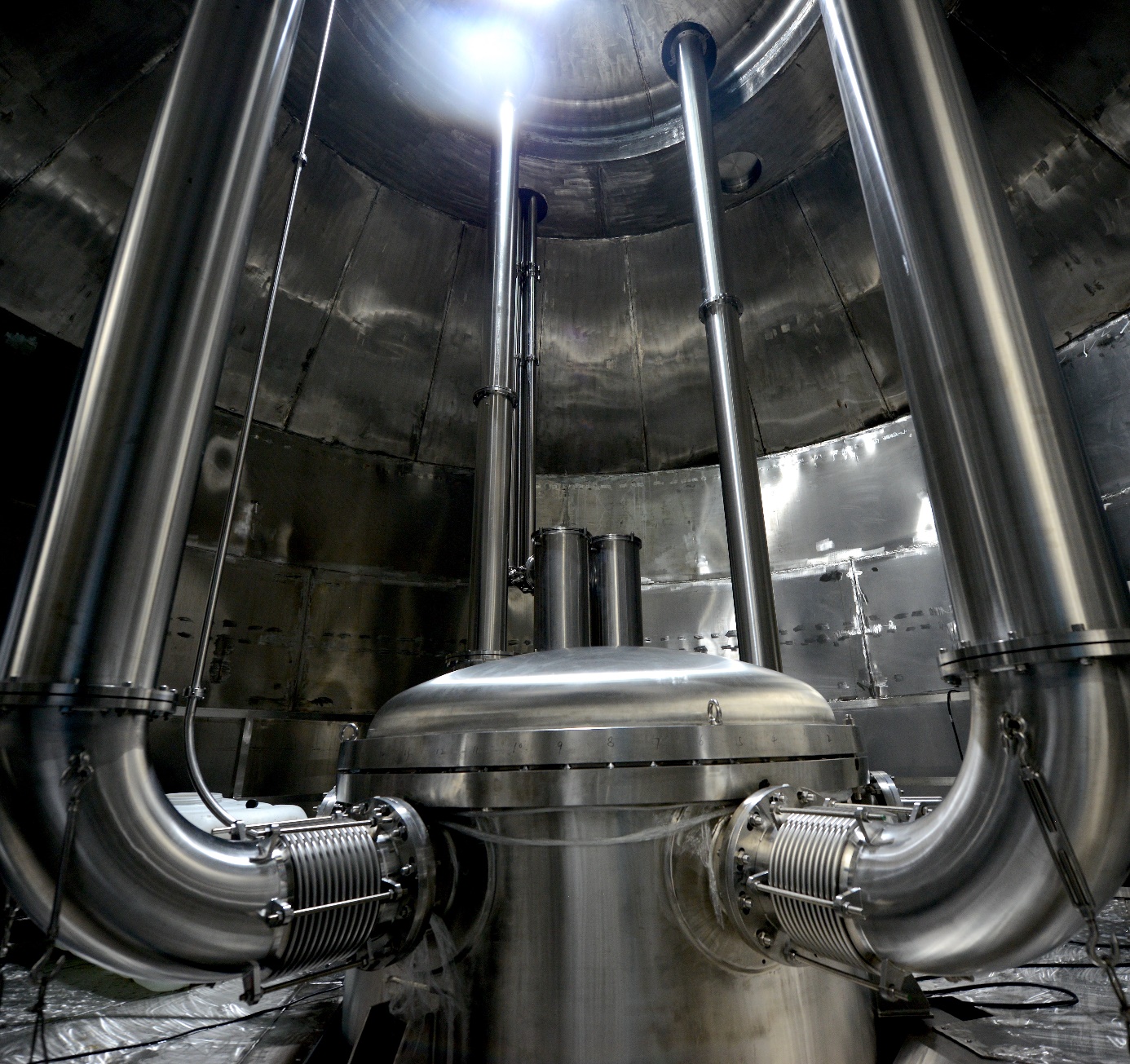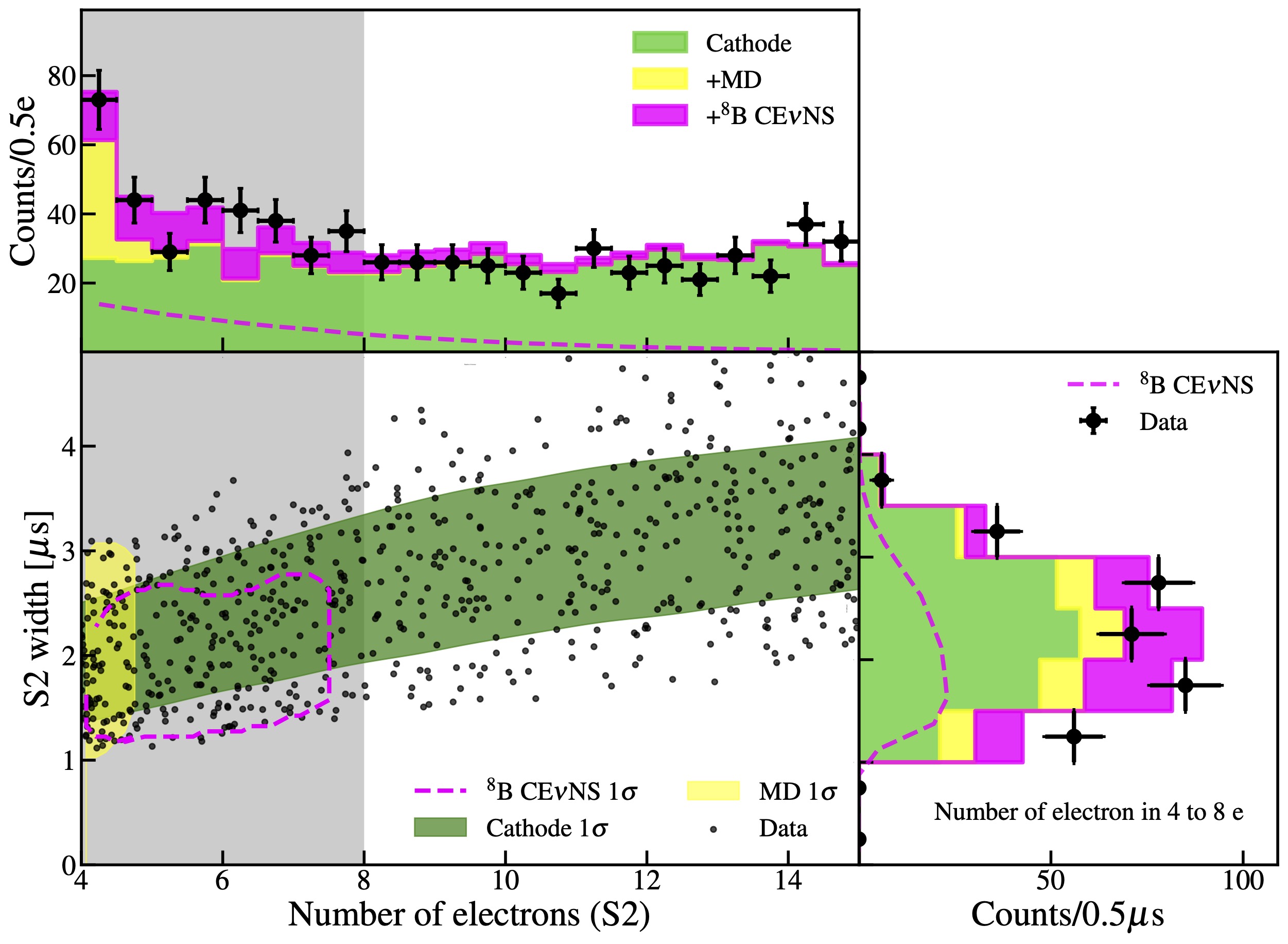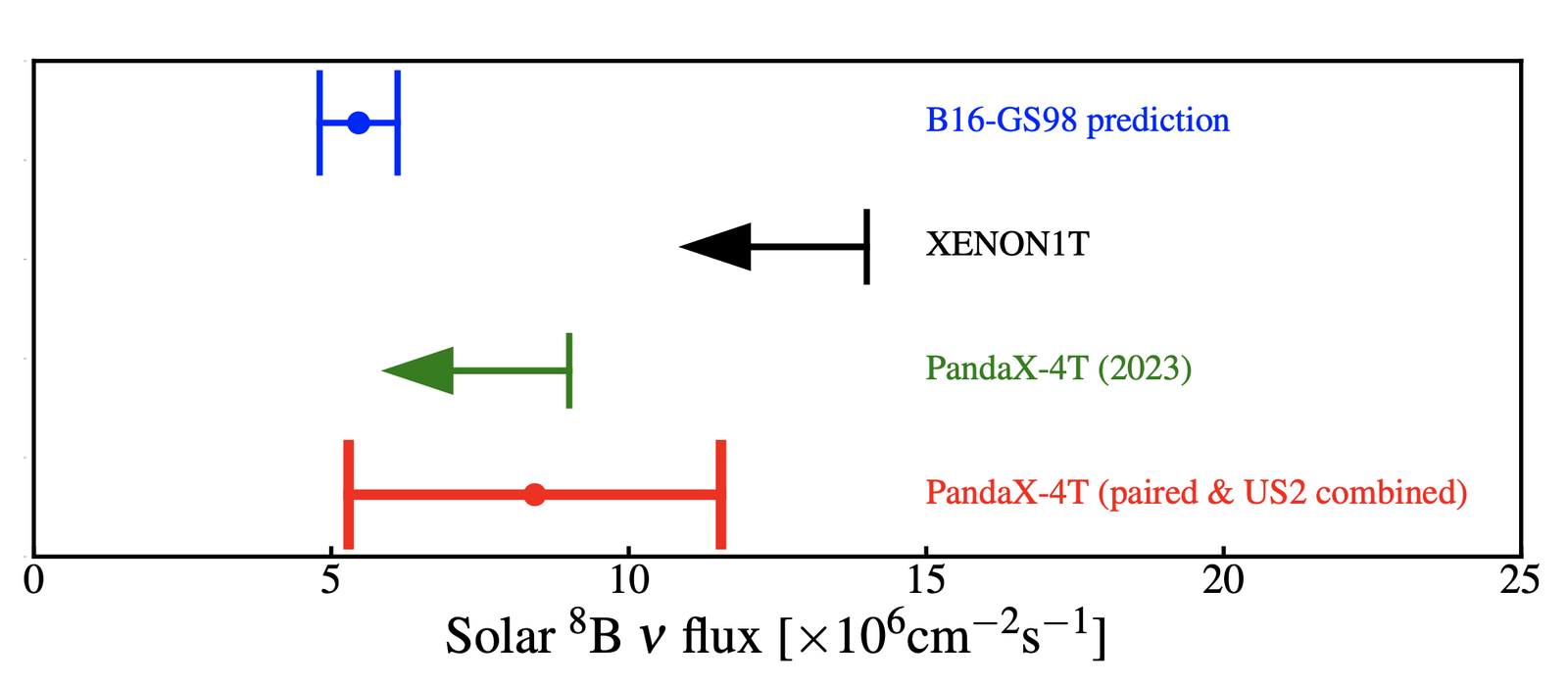Under the 2400-meter overburden of the China Jinping Underground Laboratory (CJPL), the PandaX-4T experiment has, for the first time, found indication of Coherent Elastic Neutrino-Nucleus Scattering (CE𝜈NS) events induced by solar neutrinos. The finding, with a statistical significance of 2.64σ, is detailed in a paper titled "First Indication of Solar 8B Neutrinos Through Coherent Elastic Neutrino-Nucleus Scattering in PandaX-4T". The paper was accepted for publication by Physical Review Letters on Sep. 11.
The historical journey leading to this finding is captivating. Neutrinos are elusive subatomic particles that provide key insights into the composition and force of nature, as well as the inner workings of stars. In 1973, the Gargamelle bubble chamber at CERN, Switzerland, unveiled a new type of weak force felt by neutrinos, known as the "neutral current". The following year, Freedman theorized that when a low-energy neutrino (with wavelength comparable to or greater than the size of the nucleus) interacts with a nucleus, the neutral current amplitudes on individual nucleons are coherently added up, significantly boosting the probability of the scattering. This unique process, akin to x-ray diffraction on a crystal lattice but involving neutrinos colliding with nuclei, was later coined as the CE𝜈NS. In 1983, the force carrier responsible for the neutral current, the Z boson, was unearthed at CERN (1984 Nobel Prize). Soon after this triumph, a proposal was made by Drukier and Stodolsky for detecting low-energy neutrinos through CE𝜈NS, which requires ultra-sensitive detectors capable of sensing the minute energy carried by the recoiling nuclei. By 1985, Goodman and Witten recognized that such detectors were also well-suited for searching for the collisions between dark matter particles and nuclei. This sparked a four-decade-long global race of underground dark matter direct detection experiments. However, it was the detection of CE𝜈NS that beat the crowd - in 2017, CE𝜈NS was first observed using neutrinos produced from a proton beam at Oak Ridge National Laboratory in the US. On the other hand, despite enormous progress in the sensitivity of dark matter experiments, no definitive signals of dark matter particles have been found. It has been long anticipated that these underground dark matter detectors would eventually detect the CE𝜈NS events induced by the solar and atmospheric neutrinos, which closely resemble dark matter signals, placing a “soft floor” on dark matter searches. By then, dark matter detectors also become versatile low-energy neutrino observatories, capable of exploring neutrino interactions and astrophysics through a novel approach.
The fusion reactions in the Sun release an immense number of neutrinos. The “hotter” end of the neutrino spectrum is dominated by those produced by the decay of boron-8 (8B). These 8B neutrinos pass through the Earth in vast quantities—millions through a single fingernail every second. The first real-time observation of 8B neutrinos was made using a 2000-ton Kamiokande-II water detector in Japan in 1989, through neutrino-electron scatterings. Around the turn of the last century, precise measurements of 8B neutrinos were made using a 1000-ton heavy-water SNO detector in Canada, and an even larger 50-kiloton Super-Kamiokande detector in Japan. These measurements unveiled a peculiar fact: neutrinos possess tiny but non-zero masses, allowing them to 'oscillate' from one type to another (Nobel Prize 2015). However, apart from those at Oak Ridge, no other neutrino detections have been made by CE𝜈NS. Such measurements are particularly challenging for astrophysical neutrinos such as 8B neutrinos due to the significantly lower energy signals (less than 1 keV).
The PandaX-4T detector is a dual-phase xenon time projection chamber with a sensitive mass of 3.7 tonnes, located deep underground in the B2 Hall of the upgraded phase of CJPL. Designed to search for dark matter and study neutrino properties, the PandaX-4T cutting-edge features—such as a low energy threshold, low background levels, and a multi-ton xenon target—provide excellent sensitivity to both dark matter and CE𝜈NS signals.
With the data collected during the first commissioning run with 95 calendar days (Run0) and the first scientific run with 164 calendar days (Run1), the PandaX-4T collaboration has produced two world leading exclusion constraints on the interaction between dark matter and nucleons in 2021 and 2024. In this study, with combined data in Run0 and Run1, the PandaX team optimized the selection criteria for the CE𝜈NS signals. The data were sorted into "paired data" where for each event both the scintillation and ionization signals of the energy deposition are recorded, and "ionization-only data" where an isolated ionization signal is recorded. The latter data set features an ultra-low energy threshold of about 0.33 keV, which greatly enhances the efficiency to 8B CE𝜈NS events. The final fit of the data reveals an event excess above the background, with the characteristics matching the 8B CE𝜈NS signal. In approximately 1 tonne-year exposure, the best-fit value for the 8B signal is 78.5 events (including 3.5 paired events and 75 ionization-only events). The statistical significance of the excess is 2.64σ, that is, there is only a 0.4% probability that the excess is due to random background fluctuations. The measured solar 8B neutrino flux aligns with the predictions of the solar fusion models. This result represents the first indication of CEνNS signals from a natural neutrino source. It also demonstrates that PandaX-4T has achieved a milestone sensitivity to dark matter.
Simultaneously, another liquid xenon experiment in Italy, XENONnT, is also actively engaged in this endeavor. Both PandaX and XENONnT presented their preliminary findings on CE𝜈NS at the Identification of Dark Matter Conference 2024 in Italy, with PandaX presenting on July 8 and XENONnT on July 10. The PandaX paper was submitted to the preprint (arXiv) and Physical Review Letters on July 15, and received official acceptance from the journal on Sep. 11. XENONnT collaboration's paper appeared on arXiv on Aug. 6, with a CE𝜈NS significance of 2.7σ. The community is excited about these new findings - they came at the right time with the right characteristics of CE𝜈NS. Future data from these xenon-based experiments are expected to advance the detection of CE𝜈NS events towards precise measurements, opening up new opportunities in neutrino research and multi-messenger astronomy.
The PandaX project is led by Shanghai Jiao Tong University. Collaborating institutes include University of Science and Technology of China, Sun Yat-sen University, Shandong University, Peking University, Beihang University, Nankai University, Fudan University, Chengdu University of Technology, Yalong River Hydropower Development Company, and University of Maryland, with over 90 researchers. The PandaX project is supported in part by National Science Foundation of China, the Ministry of Science and Technology of China, and by Shanghai Municipal Government and Sichuan Provincial Government. The CJPL administration and the Yalong River Hydropower Development Company Ltd. have provided indispensable support. The PandaX project has also received important support from various foundations, including the Hongwen Foundation, New Cornerstone Science Foundation, Tencent Foundation in China, and Yangyang Development Fund.

Figure 1: the interior of the ultrapure water tank (passive shielding), revealing the outer vessel of the PandaX-4T cryostat.

Figure 2: Two-dimensional distribution of ionization-only data in PandaX-4T in energy and signal width, where the pink contribution represents the excess in agreement with 8B neutrinos.

Figure 3: Measured solar 8B neutrino flux through CE𝜈NS, represented by the bottom red data with uncertainty, while the left arrows labeled XENON1T and PandaX-4T (2023) are both previous upper limits on the 8B neutrino flux. B16-GS98 represents the solar model prediction.
Editor on Duty: Tao Qingxiao
Responsible Editor: Jiang Qianqian, Wang ninghua, Li Xinyu

